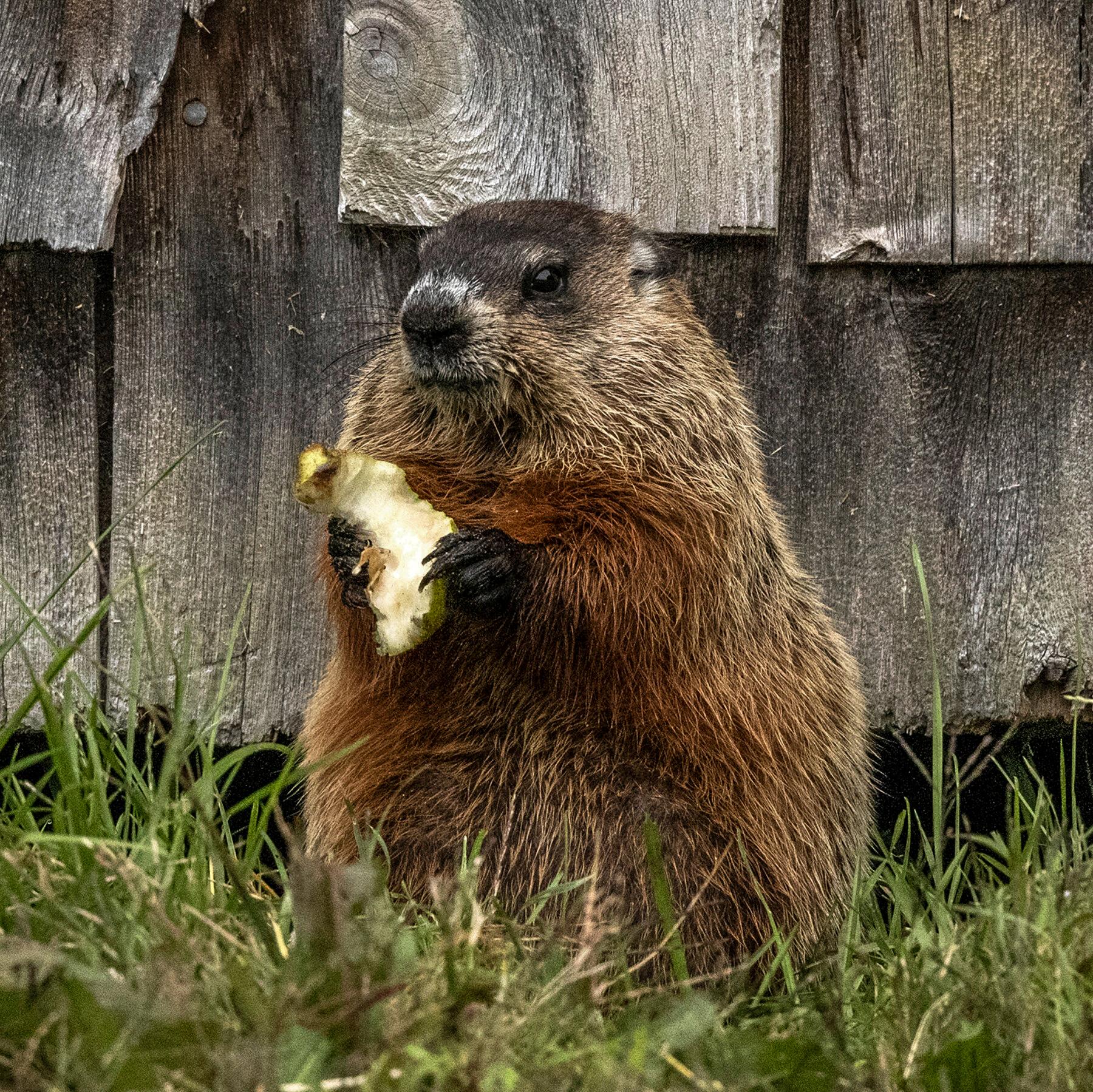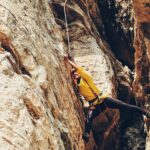Groundhogs, those chubby whistlepigs renowned for their digging prowess, harbor a surprising secret: they can climb trees! While not as agile as squirrels, these resourceful rodents do occasionally venture into the canopy. This article delves into the world of groundhog arboreal behavior, exploring their climbing abilities, motivations, and the implications for protecting your garden.
Why Do Groundhogs Climb Trees?
Groundhogs, also known as woodchucks, are built for burrowing, not branch-hopping. Their strong claws, ideal for excavating elaborate underground homes, can provide some grip on tree bark, but their stocky bodies aren’t designed for a life aloft. So, why would a groundhog ever abandon the safety of its burrow for the precarious heights of a tree?
Survival often dictates this unusual behavior. A hungry fox or coyote can quickly turn a groundhog’s peaceful foraging into a desperate dash for safety. If a tree is nearby, the groundhog may scramble up the trunk, using its claws to gain purchase. While not graceful, this escape tactic can be effective. Their claws offer some grip, but their weight and body shape limit their climbing height and speed, making them vulnerable to aerial predators like hawks and owls. Ongoing research is investigating the balance between ground and aerial predator risks and how it influences groundhog climbing behavior.
Another motivation for climbing is food. Ripe berries, fruits, or nuts high in the branches can tempt a groundhog to test its climbing skills. Although they primarily forage for grasses, clover, and other ground vegetation, a tempting treat might outweigh the physical challenge. Scientists are currently studying whether certain tree species are more attractive to groundhogs due to specific food sources or branch structures.
Wondering if the popcorn kernels in your pantry have gone bad? Check out [do popcorn kernels go bad](https://www.lolaapp.com/do-popcorn-kernels-go-bad) to find out!
How Often Do Groundhogs Climb?
Groundhog tree climbing isn’t a regular occurrence. They prefer the security and comfort of their burrows, which offer protection from predators and weather. Tree climbing is a situational behavior, reserved primarily for emergencies or when a particularly enticing meal is out of reach. The frequency of climbing may also be influenced by habitat loss due to human activity; in areas with reduced ground cover, groundhogs might resort to trees more often for refuge and foraging. Researchers are exploring how environmental changes impact groundhog climbing behavior.
While groundhogs can create dens within tree trunks, particularly in decaying wood, this is much less common than their underground burrows. Their burrows offer better insulation against cold weather and provide a safer environment for raising young. The misconception that they hibernate in trees likely stems from occasional sightings of dens in tree hollows.
| Situation | Likelihood of Climbing |
|---|---|
| Normal Day | Very Low |
| Spotting Food | Possibly |
| Escaping Danger | Likely |
| Shelter Needs | Rarely |
Are Groundhogs Aggressive?
Groundhogs are generally not aggressive. They are more likely to flee than fight, prioritizing escape over confrontation. However, like any animal, a cornered or threatened groundhog will defend itself. Their primary defense mechanisms are their sharp claws and teeth, capable of inflicting painful bites or scratches. Mother groundhogs are particularly protective of their young and may react defensively if they perceive a threat.
Approaching a groundhog, especially a mother with young, can trigger a defensive response. Maintaining a safe distance and observing these animals respectfully is crucial. Feeding groundhogs, while seemingly harmless, can be detrimental. It reduces their natural fear of humans, leading to increased interactions and potential conflicts. Additionally, processed human food is unhealthy for these herbivores, potentially disrupting their digestive systems.
Some researchers suggest that habitat encroachment due to human development may contribute to increased stress and territorial behavior in groundhogs. Further study is needed to fully understand this complex relationship.
| Situation | Likely Groundhog Response |
|---|---|
| You observe from a distance | The groundhog continues its activities. |
| You approach a groundhog | The groundhog runs away. |
| You corner a groundhog | The groundhog may become aggressive. |
| You approach a mother with young | The mother is likely to become aggressive. |
| You regularly feed a groundhog | The groundhog may lose its fear of humans. |
Do you enjoy a good song? If so, you may wonder [do you italicize song titles](https://www.lolaapp.com/do-you-italicize-song-titles). Get the answer and more about proper grammar when it comes to song titles!
How High Can Groundhogs Climb?
Groundhogs are not adept climbers, limited by their weight and body shape. They are more likely to ascend shorter trees or stay on lower branches. While their sharp claws provide grip, their bulk restricts their agility. Estimates suggest they can climb anywhere from 10 to 27 feet, with the actual height varying depending on the tree, the individual groundhog’s size and strength, and its motivation. Some experts believe their physical limitations are the primary constraints, while others suggest that a highly motivated groundhog, perhaps fleeing a predator, might exceed these typical heights.
| Feature | Description |
|---|---|
| Climbing Ability | Can climb, but limited by weight and body shape |
| Reasons | Primarily for predator evasion, food access, and emergency shelter |
| Frequency | Infrequent, primarily stays in burrows |
| Typical Height | Estimated 10-27 feet |
Current research continues to explore groundhog climbing behavior, investigating factors such as tree type, branch diameter, and individual variations in climbing ability. Further research may reveal more about the maximum heights they can reach and the specific circumstances influencing their climbing decisions. While groundhogs may not be natural-born climbers, their ability to scale trees showcases their adaptability and resourcefulness in the face of challenges.
- Unveiling the Enigma: Mansoureh Khojasteh Bagherzadeh’s Public Appearances & Private Life in Iran - July 18, 2025
- Unveiling the Mystery: Mansoureh Khojasteh Bagherzadeh’s Husband: A Rare Glimpse into a Private Life - July 18, 2025
- Unveiling Masoud Khamenei’s Mother: Power, Influence, and Iran’s Future - July 18, 2025
















